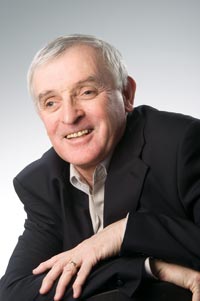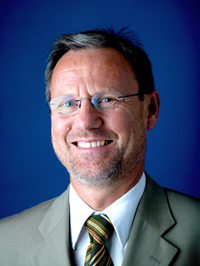 |
 |
 |
Foreword – Jean Jouzel, Climatologist and Research Director at CEA Economic development and population growth have unleashed unprecedented change in the Earth’s atmosphere. Earth observation (EO) satellites have propelled not only our ability to investigate this change and to monitor the consequences in real-time but also to make issues around weather and climate more visible and understandable for the general public.
Every year, the Conference of the Parties (COP) brings together the nations that are signatories to the UN Framework Convention on Climate Change (UNFCCC). This year will be the 21st such meeting, the two most emblematic having been Kyoto in 1997 and Copenhagen in 2009. Copenhagen set a target of capping long-term global warming at 2°C above pre-industrial temperatures. That marked a decisive step, but we now need to translate this commitment into actions. To reach this target, the conference in Paris aims to secure a specific agreement on reducing greenhouse gas emissions after 2020.
To meet the objective of 2°C, we need to start by breaking the emissions spiral by 2020 and then reduce our greenhouse gas emissions by at least a factor of two, ideally three, between 2020 and 2050 to achieve carbon neutrality – i.e., zero net carbon emissions – by the end of the century. The best way to view the problem is to look at our energy requirements, which currently are met largely by burning fossil fuels. To reach the long-term 2°C target, we need to keep nearly 80% of fossil fuel reserves obtainable with current technologies and costs in the ground. We must not use more than 20% of these easily accessible reserves. Seen in that light, it is obvious that we need to completely rethink our current development model.
The role of the Intergovernmental Panel on Climate Change (IPCC) in this process is of the utmost importance. Indeed the IPCC’s mission is to provide a diagnosis and scientific elements on how the climate system works, the impacts of disruptions to this system and possible solutions to inform policymakers’ decisions.
Satellite data have truly revolutionized how we see the climate system. The most striking example is sea level, which is currently rising at a rate of 3mm a year. Satellite measurements at the polar ice caps and on temperate glaciers have shown that roughly half of this rise is due to ice melt. Slightly less than the remaining half results from expansion of the warming ocean, which stores 93% of excess heat. The remaining proportion comes from extracted groundwater, which obviously ends up in the sea; it is not huge, but it accounts for 13% of sea level rise all the same. Satellite data enable us to precisely calculate these different contributions. Without such data, we would not have that kind of precision, especially when determining regional characteristics. It’s the kind of thing we didn’t even dare dream about 30 years ago!
|  |
Ideally, satellite data will be applied to help reduce the uncertainties in our models. The main uncertainty today concerns clouds. We do not know if they are heating or cooling the climate system. Thanks to their global coverage, satellites can give us new insights into how clouds, aerosols and radiation interact and tell us more about how the physical and chemical make-up of clouds evolves as they warm. The other aspect is our knowledge of the atmosphere’s composition. For the purpose of climate negotiations, there is value in being able to determine greenhouse gas emissions in a specific region or sector of the economy. Several satellite projects are looking to determine regional greenhouse gas emissions, but what we need is continuous observations. Lastly, satellites still have a lot to teach us about the consequences of global warming on agriculture, forests, permafrost and more.
Satellite observations therefore provide the fundamental basis of our knowledge of the climate system. The Committee on Earth Observation Satellites (CEOS) together with the Coordination Group on Meteorological Satellites (CGMS) are coordinating the work of space agencies on climate in order that the global contribution of Earth observation (EO) satellites is greater than the sum of its individual parts. As during the COP negotiations, international cooperation and solidarity are key factors in making concrete progress on sustainable development. I am particularly glad to invite you to read this Handbook that shows remarkable examples of the essential role that satellites play in climate change studies.
Jean Jouzel
Climatologist and Research Director at CEA, the French Atomic Energy and Alternative Energies Commission, Specialist in paleoclimatology.
2002 – CNRS Gold Medal, France’s highest scientific distinction
2007 – IPCC is awarded the Nobel Peace Prize while he is Vice Chair
2012 – Vetlesen Prize, equivalent to the Nobel Prize in the field of geophysics and geology
Jean Jouzel is Vice Chair of the IPCC Working Group I and the author of over 300 scientific publications.
Jean Jouzel will be on the French delegation’s team of science experts for COP, as he has been every year since 2000. Jean Jouzel will also be involved in the run-up to the event in Paris: he has been asked to sit in the conference Steering Committee by COP21 chair Laurent Fabius and he is also the Chair of the High Level Board for the science conference “Our Common Future Under Climate Change” held in July at UNESCO. |
 |
 |


|
 |
CEOS Message to COP21
CEOS ensures international coordination of the civil Earth-observing programmes of more than 30 of the world’s leading space agencies.
These agencies are collectively investing billions of dollars in space infrastructure with the capability to provide sophisticated, continuous and sustained observations of the entire planet. The global nature of climate change issues presents special challenges in terms of the need for global information and data on key planetary indicators that can provide the information required for governments and policy makers to make well-informed decisions. Recognising that no single country can satisfy all of the observational requirements necessary for monitoring of the Earth system, governments are taking steps through CEOS to harmonise and integrate their observing network.
This report explores how satellite EO can contribute to the challenges of providing the information that society needs in order to accurately characterise the nature of changes to our climate and to help define the most cost-effective strategies for mitigation and adaptation. Satellite EO data have already proven to be fundamental to the development of the evidence that has persuaded governments to act. Satellite EO data will continue to be an essential source of evidence necessary for informed decision-making, supporting the science that underpins climate policies.
|
 |
The report has been compiled in support of the 2015 Paris Climate Conference – the 21st Conference of the Parties of the United Nations Framework Convention on Climate Change (UNFCCC COP21) – to help develop a broader understanding of the fundamental importance of satellite EO to the information needed to inform our climate policies on all scales. Satellites contribute to more than half of the 50 Essential Climate Variables (ECVs) identified for the UNFCCC by the Global Climate Observing System (GCOS) and provide unique measurements that would not otherwise be possible. The institutional structures and processes already exist to link the information needs of parties to the UNFCCC with the definition of observing requirements and with the planning processes of the space agency observing programmes, but will need recognition and support to evolve effectively in step with any binding agreement and its implementation to ensure society is equipped with the information it needs.
We hope that this CEOS Report might serve as a valuable reference source for a variety of readers from all sectors of society, including those engaged in the COP21 process, as well as decision-makers in political and socio-economic sectors.
Volker Liebig
Director of Earth Observation Programmes
European Space Agency (ESA)
David Williams
Executive Director
Commonwealth Scientific & Industrial Research Organisation (CSIRO), Australia
CEOS Chairperson for 2016
|
 |